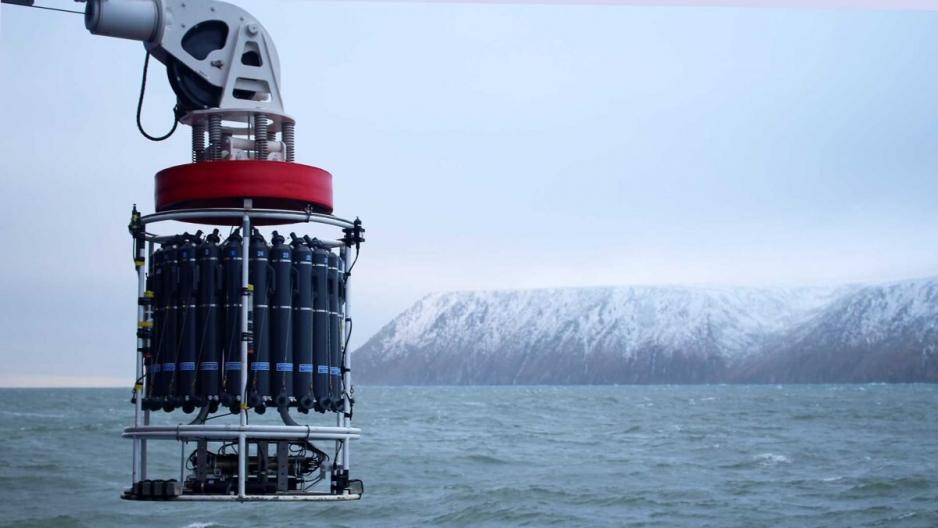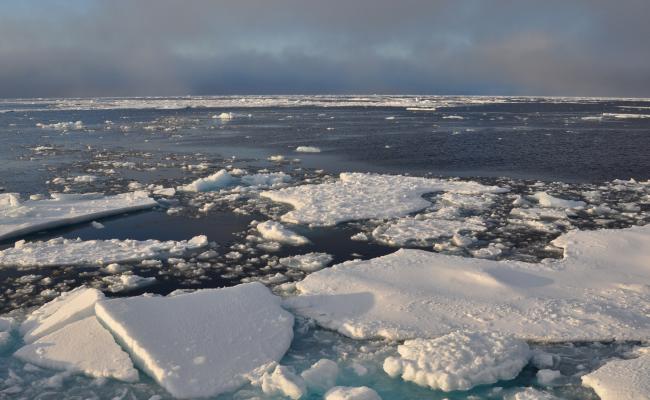Growing Potential for Toxic Algal Blooms in the Alaskan Arctic, Study Finds

A water sampler is deployed from the U.S. Coast Guard icebreaker Healy during a 2019 expedition to the Alaskan Arctic Ocean to study the presence of harmful algae and the conditions that promote their growth and spread. (Credit: Woods Hole Oceanographic Institution)
Changes in the northern Alaskan Arctic ocean environment have given rise to a growing potential for toxic algal blooms in the region, according to a recent research article.
The research article is based on sediment samples collected during 2018 and 2019 in the region extending from the Northern Bering Sea to the Chukchi and Beaufort Seas north of Alaska.
The sediment samples allowed the researchers to count and map Alexandrium cysts, a harmful algal bloom that lies dormant in the seafloor for much of the year, germinating or hatching only when conditions are suitable.
"We've known about human and marine wildlife health risks associated with Alexandrium and its toxins in Alaskan waters for a long time, including occasional events north of Bering Strait, but these results show increased potential for large and recurrent blooms of this species as a new hazard for Alaska's Arctic," said Don Anderson, senior scientist and Director of the U.S. National Office for Harmful Algal Blooms, who led the study, first reported by Science Daily.
"The rapid warming that we're seeing all across the Arctic is setting the stage for dangerous bloom events in the waters of western and northern Alaska that we formerly thought were too cold for significant germination and growth”.
"As the climate has warmed, the significant and ongoing reduction in extent and duration of seasonal ice cover along the coast of western and northern Alaska has resulted in dramatic changes," said Bob Pickart, a physical oceanographer and co-leader of the project with Anderson. "These include warming temperatures due to local heating of ice-free waters, as well as an increased influx of warmer, fresher water from the Pacific flowing north through the Bering Strait region into the Chukchi Sea."
"What we're seeing now are very different Arctic Ocean conditions than anyone in living memory has known," said Anderson. "We've learned from the Gulf of Maine in the Atlantic Ocean how to monitor and manage Alexandrium bloom events and how to sustain commercial and recreational fisheries in the face of harmful algal blooms, but navigating this new Alaskan Arctic HAB problem is going to take a great deal of targeted research and far more attention to the food security of coastal residents and Alaska Natives and the health of Arctic wildlife than we've paid so far”.
The entire research article can be accessed here.


